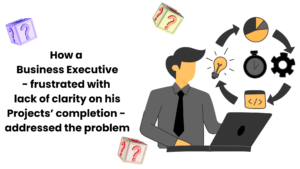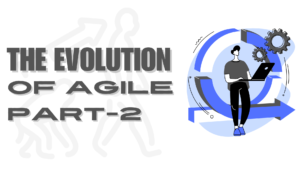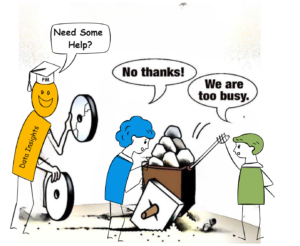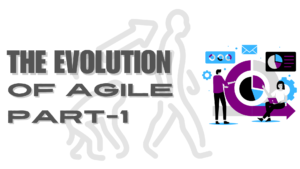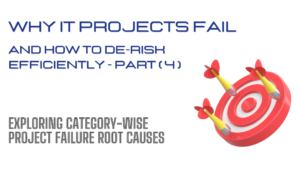Why do IT Projects fail - and How to de-risk them efficiently - Part 1
This Post shall be published as a 5-part series over 5 days.
Objectives & approach:
There is a significant cost to Businesses worldwide, attributable to IT Project failures.
However, there is also a considerable cost attributable to Risk management – where Risk management strategies are executed to minimize Project failure potential.
In this series of articles, I am proposing a framework for applying the most cost-appropriate Risk mitigation strategies so as to drive the maximum risk mitigation at the minimum cost to the project and the project stakeholders.
Some pertinent background:
As per Frank Faeth: According to the Standish Group’s Annual CHAOS 2020 report, 66% of technology projects (based on the analysis of 50,000 projects globally) end in partial or total failure.
As per Tanja Bernhardt-König, 75% of IT Projects fall short of goals.
Te Wu & Ram B. Misra, in their HBR article in November 2023, wrote that 55% to 75% of all “big” projects fail to meet their objectives.
Clearly, IT projects – especially large projects – are prone to failure, due to a variety of root causes.
So what is the cost of Project failures?
It is hard to assign a specific number with so many variables in play – company size, the scope of the project, scheduled completion, resources involved – but PwC found that IT failures cost the U.S. economy about $50-$150 billion annually.
Further, there are some well-defined tactics – essentially Risk mitigation actions – to contain the impact of these root causes.
There are enough & more articles written about the Risk mitigation tactics.
Each of these tactics follow some standard paths, and require considerable planning, execution, & monitoring efforts.
However, in today’s economic context, the focus on Business costs and affordability is extremely high.
Hence a key challenge is this: The cost for Risk management has to be assessed in the context of the Project and its’ potential failure, ahead of embarking on the Risk mitigation journey.
References:
https://www.linkedin.com/pulse/project-failure-rates-facts-reasons-frank-faeth/
https://www.linkedin.com/pulse/most-projects-fail-75-fall-short-goals-tanja-k%C3%B6nig/
https://hbr.org/2023/11/why-big-projects-fail-and-how-to-give-yours-a-better-chance-of-success
https://optymyze.com/blog/the-cost-of-it-implementation-failure
Project Complexity matrix:
The fundamental premise of the “Project Complexity Matrix” is this:
The type of project and the scope of the Project stages together largely determines the depth & breadth of risk management & its intensity.
Typically, IT Projects types can be defined based on the following factors:
Development stage & adoption level of core Technologies used
- Nascent technologies, by virtue of having been never used at all, or at least in real-world scenarios, carry the highest risk.
- On the other hand, older technologies do not carry much risk – they have been tried & tested many times. All problems are already known, and addressed.
Quantum of data migration/ data re-use mandated
- When an “older system” drives a need for updation (typically for operational efficiency/ operational cost reduction/ addition of new features & reduction of technical debt, etc), data will need to be migrated to the new system.
- There is always a strong potential for the data to cause failures at the point of migration.
The Scope & Complexity of Project stages can be defined based on the following factors:
The Project concept level:
- An “Exploratory project” or “Research project” by virtue of introduces a lot of unknowns, driving up risk & the potential for failure – especially since Risk mitigation actions are also not clear.
- On the other hand, a Platform upgrade project or Enhancement project will carry far less risk because the platform & the associated challenges are already known well.
The Project’s field of operation & reuse levels
- A Greenfield project – where the building starts in a new context, carries far greater risks than a Brownfield project where the context is already known, and only the specifics of the project will add complexity.
The Project Complexity Framework is attached.
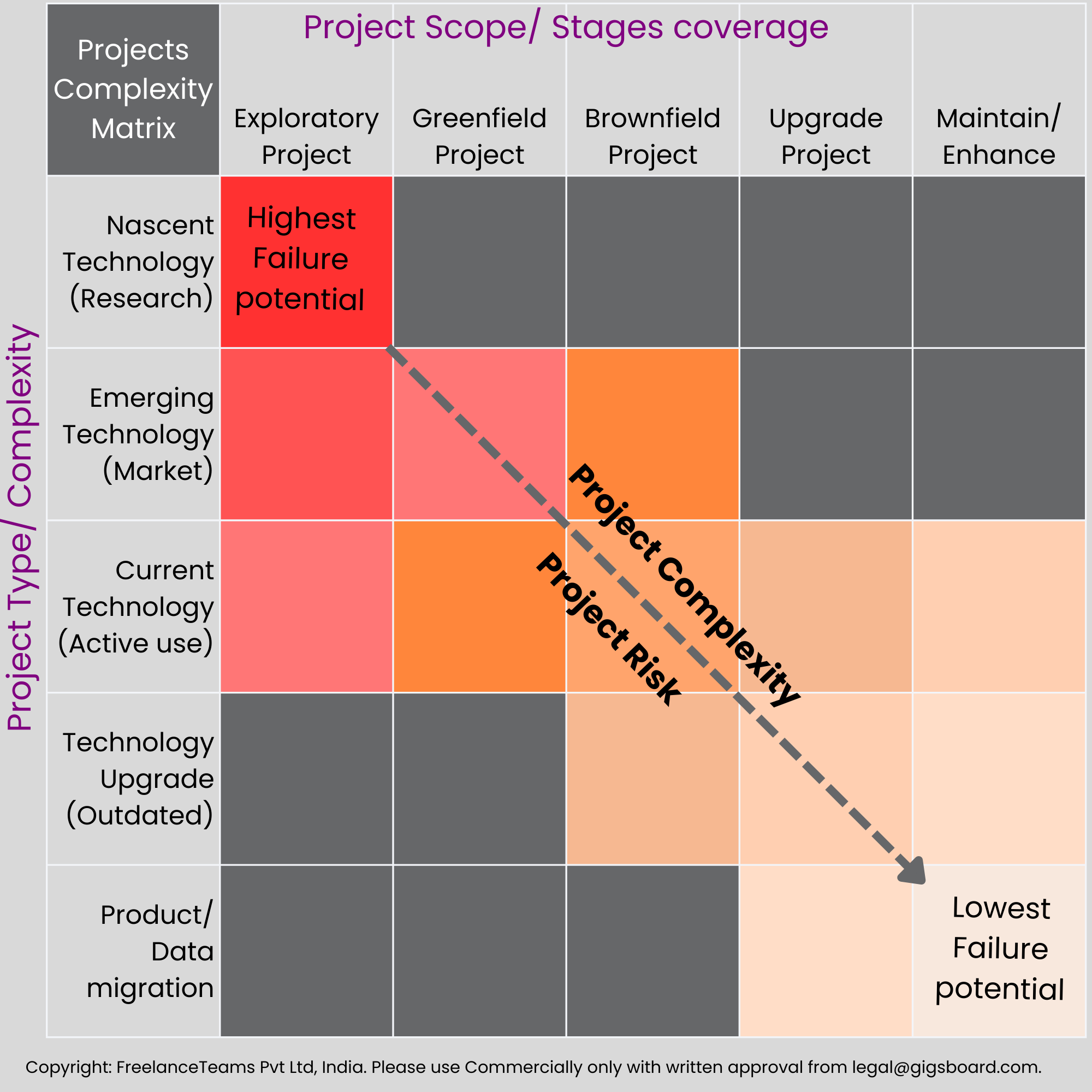
The implications:
Assessing the likely risk level, and then identifying the more likely risks applicable, can help Project/ Program Managers & Business Sponsors focus on the right Risk mitigation tactics for a specific Project or Program.
The Project Complexity Matrix can be used for this Risk assessment.
Coming next in this series:
Project risks, Risk mitigation, cost of risk management, and viability of these costs.
